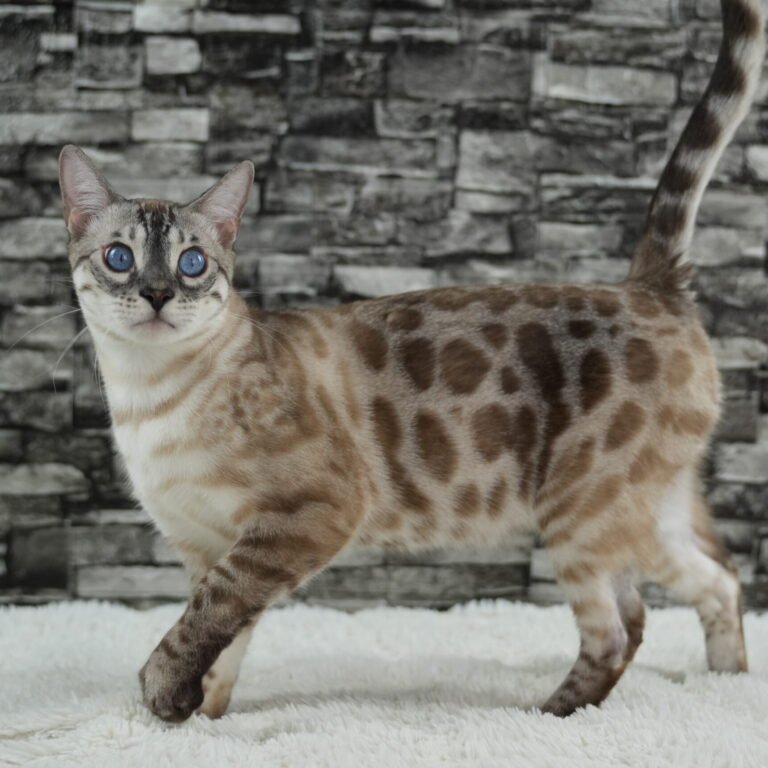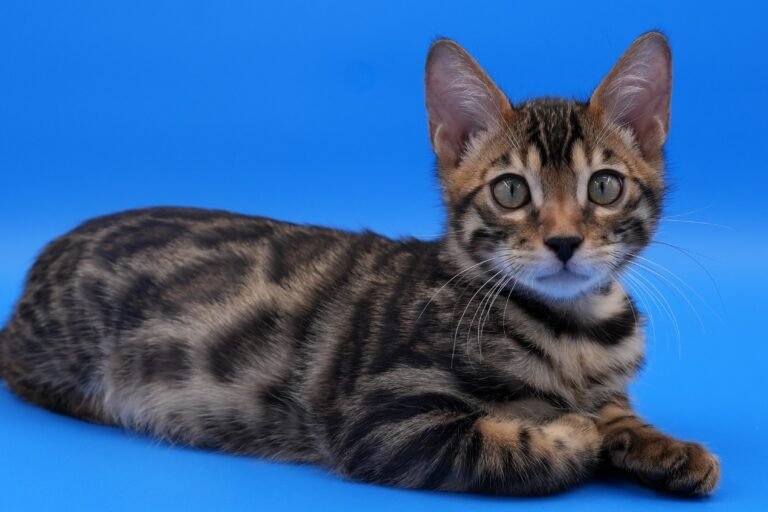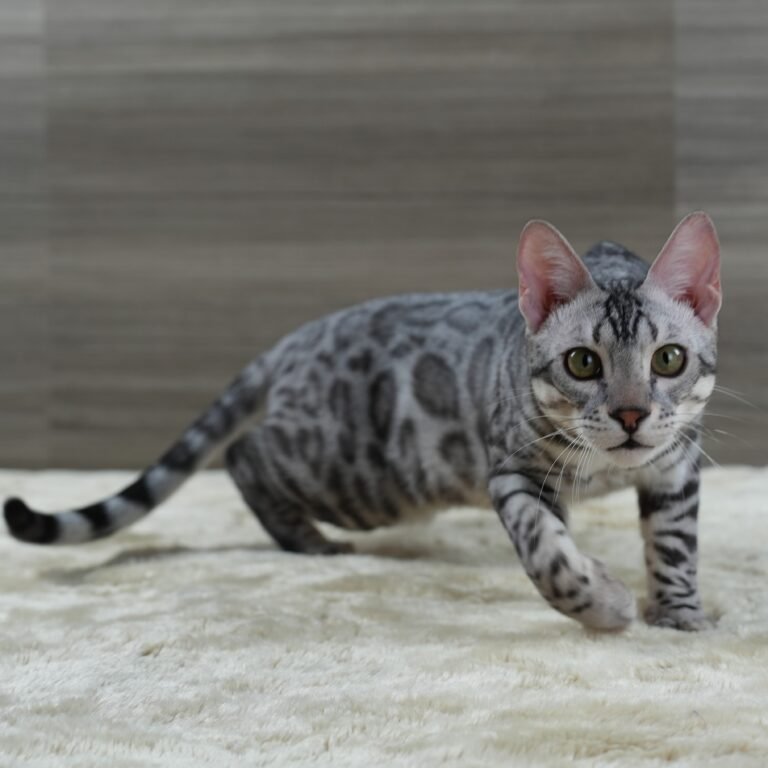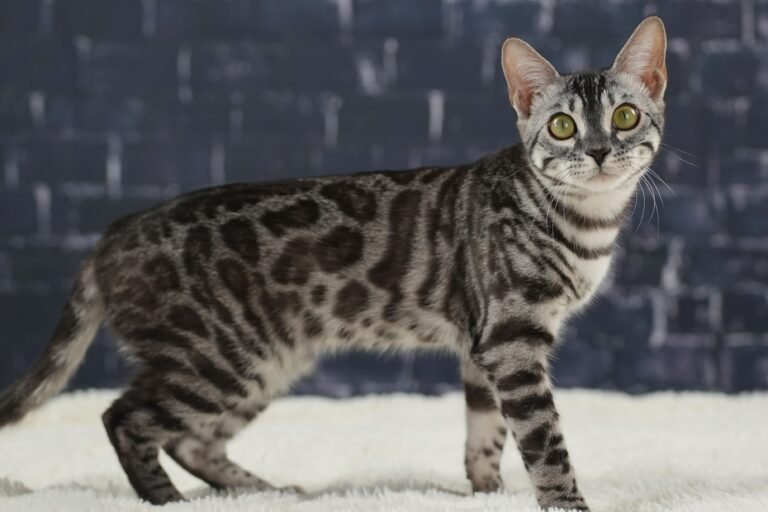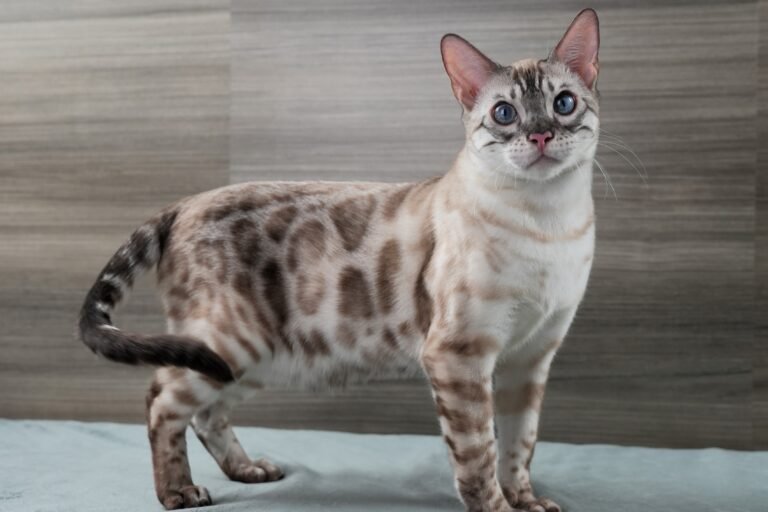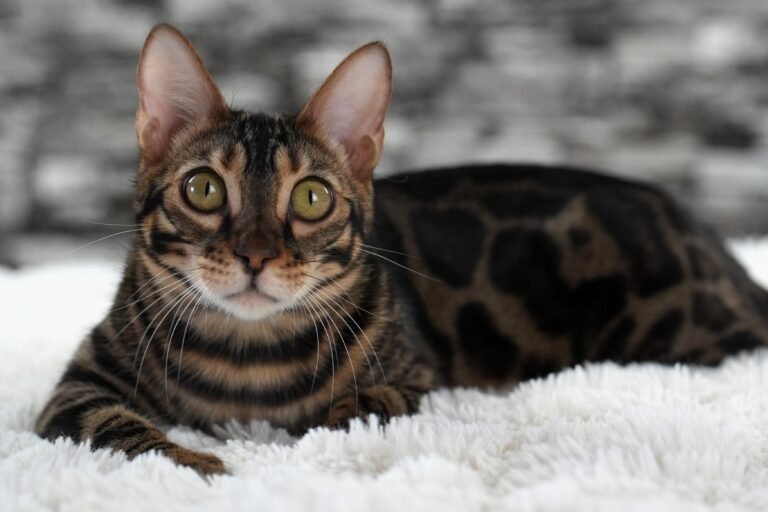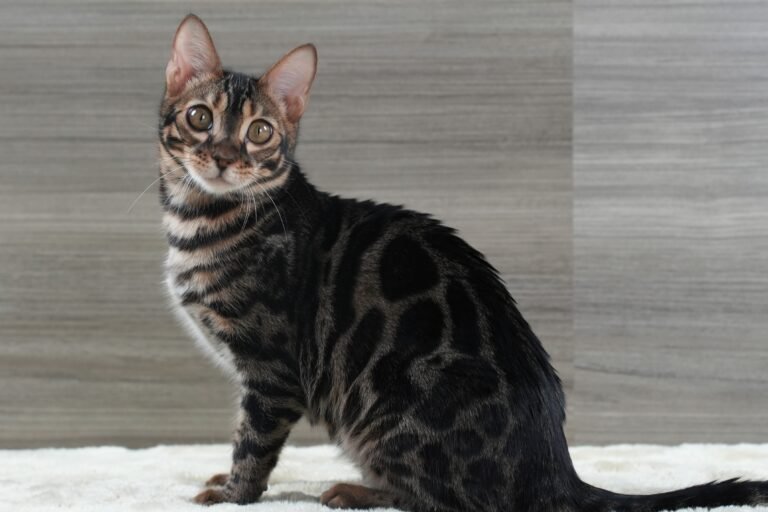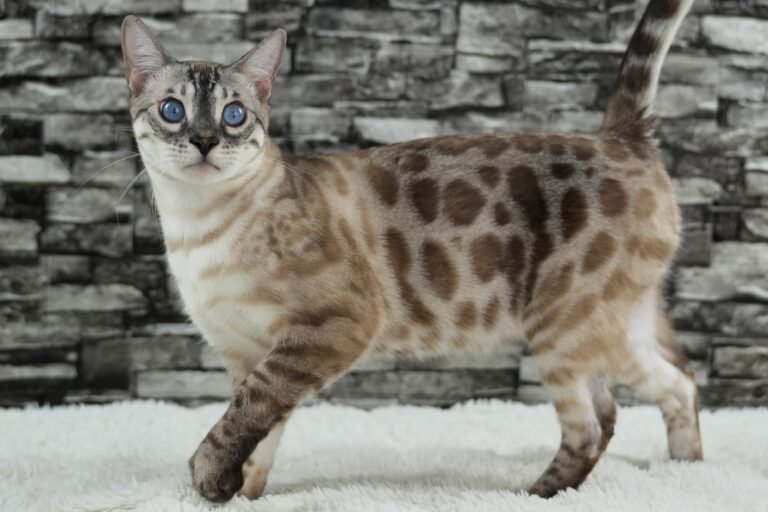Bengal Cat Colors
Bengal cats showcase a remarkable variety of coat colors, stemming from the unique combination of Asian Leopard Cat and domestic cat genetics. While brown is the most common and widely recognized color, Bengals can display a spectrum of hues ranging from snow to melanistic, including rare and sought-after variations. These colors result from complex genetic interactions, with some traits being dominant and others recessive. Not all color variations are universally recognized by cat associations, and some remain controversial within the breeding community. The diversity of Bengal cat’s coat colors contributes significantly to the breed’s popularity among enthusiasts.
Brown Bengal Cats
Brown (Black) Bengal Cat
Brown (Black) Bengals are the most popular color variation. Their background ranges from golden to mahogany, with black or deep brown patterns. These cats typically have black paw pads and nose leather, as well as green or golden eyes. The dominant “B” allele produces this coloration.

Chocolate Bengal Cat
Chocolate Bengals have a warm, milk-chocolate colored coat with darker brown patterns. Their paw pads and nose leather are dark pinkish-brown. This rarer color results from a recessive gene (b/b or b/b1 genotype) that modifies black pigment production. It’s not recognized as a standard color by major cat associations.

Cinnamon Bengal Cat
Cinnamon Bengals, also called red or sorrel, are extremely rare. They have a warm, reddish-brown coat with darker cinnamon patterns. Their paw pads and nose leather is a pinkish cinnamon. Genetically recessive (b1/b1 genotype), this color further modifies the black pigment. Like chocolate, it’s not a standard color in major breed associations.
Brown Bengal cats come in three distinct shades: brown (black), chocolate, and cinnamon, ranging from darkest to lightest. These colors result from genes modifying eumelanin production. Each shade has unique characteristics, with brown (black) being most common, while chocolate and cinnamon are rarer. Brown Bengals typically feature gold or green eyes, regardless of their specific shade.
Silver Bengal Cats
Silver Bengal cats are characterized by their silvery-white base color adorned with black or dark gray patterns. This unique coloration is the result of a dominant inhibitor gene that suppresses melanin production in the coat. While highly sought after, silver Bengals present significant breeding challenges as breeders strive to achieve clear coloration and contrast while maintaining the breed’s wild appearance. The silver color was introduced through outcrossing with American Shorthairs and influenced by Egyptian Maus. Some silver Bengals may display “tarnish,” or unwanted brown tones, particularly on the face and feet. Despite initial controversy over its inclusion in the breed standard, the silver Bengal has become popular among both breeders and pet owners for its distinctive and eye-catching appearance.
Snow Bengal Cats
Lynx Bengal Cat
Seal Lynx Bengals, the lightest of the snow group, are typically born white or with faint markings, developing a brownish-grey or tan pattern on a white or cream background later. They’re known for their ice-blue eyes and originate from cats Rorschach, Pennybank, and Praline. While sought after for their blue eyes, visible color points (Siamese pattern) are considered undesirable in the Bengal standard.

Mink Bengal Cat
Seal Mink Bengals are born with a detectable pattern that usually darkens as they grow, featuring an ivory or cream background with an almost caramel-toned pattern. They generally have aqua-green eyes, sometimes gold, resulting from inheriting one Seal Lynx gene and one Seal Sepia gene, creating an intermediate appearance between the two.

Sepia Bengal Cat
Seal Sepia Bengals, usually the darkest of the snow group, are born with a distinctive seal brown to dark seal brown pattern and have golden or green eyes. Introduced through a Burmese outcross, their coat often resembles actual snow leopards, with a gray-yellow base tone that provides camouflage among rocks when not covered in snow.
The Snow Bengal cat comes in three variations: Seal Lynx, Seal Mink, and Seal Sepia. These colors resembled the snow leopard and were introduced to the Bengal breed through domestic cats. The three snow colors were first recognized by the International Cat Association in 1992 and gained championship status in 1994. Each variation has distinct characteristics in terms of coat color, pattern visibility at birth, and eye color.
Dilute (Blue) Bengal Cats

Blue Bengal Cat
Blue Bengals are dilute brown (black) Bengals with steel-blue or powder-blue coats and dark gray-blue patterns. They have hazel or green eyes, and a slate-grey nose and paw pads. Genetically they are a brown (black) Bengal with two recessive dilute genes.

Lilac Bengal Cat
Lilac Bengals are dilute chocolate Bengals with pale grey/lavender coats and dark grey/lavender markings. They have lilac-pink or milk-chocolate nose and paw pads. This rare color requires inheriting recessive chocolate and dilute genes from both parents.

Fawn Bengal Cat
Fawn Bengals are dilute cinnamon Bengals with warm light brown coats and fawn markings. They don’t typically have much contrast in their pattern but have cinnamon-brown nose leather and pinkish-tan paw pads. This is the rarest Bengal color and it requires inheriting recessive fawn and dilute genes from both parents.
Dilute has three variations: blue, lilac, and fawn. Blue Bengals are a grayish-blue color, lilacs are a grayish-purplish color, and fawn Bengals are a pale brown color. The dilution gene affects a Bengal cat’s color density. Cats with dominant genes (D/D) have no dilution, while those with D/d carry the dilute gene but don’t express it. Cats with d/d express diluted colors. Diluted colors are still rare in Bengal cats, and most registries don’t recognize or allow them in shows.
Charcoal Bengal Cats
The Charcoal Bengal cat is characterized by a unique masking layer that creates a darker, more dramatic appearance. This trait, caused by the Agouti Prionailurus bengalensis (APb) gene inherited from the Asian Leopard Cat, results in “Zorro markings” including dark face masks, eye goggles, and a cape-like stripe down the back. Initially overlooked in breeding programs, Charcoal Bengals have gained popularity in recent years. They can occur in all Bengal color variations and patterns, with the charcoal effect acting as an overlay rather than a separate color. Genetic studies have revealed the complex inheritance patterns of the APb gene, which interacts with other agouti alleles to produce this striking appearance. Breeders utilize this gene to enhance color depth and vibrancy, aiming to create cats that closely resemble their wild ancestors. Ongoing research continues to uncover the intricacies of Charcoal Bengal genetics, promising further refinement of this captivating feline variety.
Melanistic Bengal Cats







